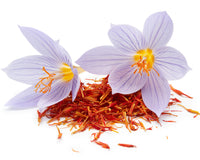Among the several flour varieties, wheat flour is one of the best. This is because wheat flour is made from the kernel of the wheat grain.
All of the components of this flour are employed in the milling process: endosperm, germ, and bran. Wheat flour contains all of the important nutrients, vitamins, minerals, and antioxidants as a result of this.
When you eat wheat flour, you are prioritizing a healthy diet over anything else. But it doesn't imply you'll always obtain the best wheat flour. The quality of wheat flour is also important in maintaining a healthy diet.
How Do You Choose the Right Flour?

Flour is the most important ingredient for a baker, and it's the one we use in almost all of our recipes. It's the basis upon which all other tastes are built. Simple sandwich bread, fluffy pie crust, and buttery biscuits are among the baked foods with the largest amount of this ingredient.
Despite the significant function flour plays in our kitchens, it is sometimes forgotten when discussing ingredients. We meticulously choose the additional ingredients in our recipes, evaluating chocolate variations and debating cheese sorts.
Flour, on the other hand, does not receive the same level of care; many bakers simply think that flour is flour. However, not all flour is made equal, and as bakers, we want you to understand why.
Things To Consider When Choosing Your Wheat Flour
Wheat is ingested in the form of flour and whole grains. Both types should be included in your diet at all times. Wheat contributes to a well-balanced diet by providing all of the vital nutrients and minerals needed to live a healthy life and increase immunity.
Before you buy wheat flour, here are a few things you should keep in mind.
1. Read The Labels Provided On The Packets
The labels on wheat packets provide a wealth of information, including the date of manufacture, expiration date, nutritional information, and the freshness of the wheat, among other things.
You must read all of this information before purchasing wheat from the retailers. Only when you've determined that the wheat is worth purchasing should you make your final selection.
2. You Should Focus On The Color Of The Wheat And Its Texture
Pay attention to the colour of the wheat to verify that you are obtaining the finest quality wheat. Fresh wheat is brownish-white in colour and gritty in texture. However, if the wheat is particularly brown in colour, do not purchase it. It indicates that the wheat has gone rancid and is no longer wholesome or safe to eat.
3. Check To See if the Product Is “100% Whole Wheat”
There are a lot of wheat brands on the market that claim to be the best. Most of the time, however, the brands combine refined and pure wheat. This is not good for your health. So, when you go out and buy wheat, make sure it's 100 per cent whole wheat rather than processed and unhealthy wheat.
4. You Should Test The Wheat
There is one method for testing wheat and ensuring that you are getting the maximum possible quality. You may take some water and mix it with some wheat. If the brand begins to float in the water, it is not natural whole wheat, and you should not purchase it. You can tell if you're receiving pure quality or not this way.
5. Choose Your Wheat Varieties Carefully
Wheat comes in several varieties. You may either get advice from a nutritionist or a diet specialist to determine which sort of wheat is ideal for your household. To feed your family nutritious meals, pick wheat that is rich in nutrients, especially fibre and protein.
6. Be Specific About The Gluten Content
Gluten allergy exists in certain people, particularly those with celiac disease. As a result, you should avoid wheat with a high gluten formation rate.
How To Tell Types of Flour Apart

Quality and protein content are two crucial factors to consider. First, make sure you're using the finest flour you can find. To give flour an unnaturally white look, most flour makers use chemicals like chlorine dioxide and benzoyl peroxide.
Second, you should be aware of the protein content. Every variety of flour is milled to contain a specified amount of protein; the higher the protein concentration, the "stronger" the flour.
It's critical to choose the correct flour with the right protein level for your recipe, as well as a brand that sticks to that amount closely.
Because certain flour brands allow for vast variations in protein content, you'll receive somewhat varied results each time you use it. You'll get the finest, most consistent outcomes at home if you use flour with stable protein content.
If your recipe specifies a specific flour, that's fantastic! That's what you should do. Here's a brief breakdown of which flour to use if you're not sure.
All-Purpose Flour (11.7% protein)
The pantry's most adaptable "essential" flour. With a medium protein concentration, all-purpose flour may be used in any recipe that calls for flour, but it's especially good in cookies, muffins, quick bread, and pie crusts. It is robust enough for bread but gentle enough for soft scones and biscuits.
Bread Flour (12.7% protein)
Here's what you need to know about yeast bread: the higher the protein content, the higher the potential rise. All yeast baking, from basic sandwich bread to bagels to pizza dough, should be done with bread flour.
White Whole Wheat Flour (13% protein)
This flour is milled from 100 per cent hard white spring wheat (a lighter-coloured grain than the conventional red wheat used in whole wheat flour), and it has a nutritional profile comparable to whole wheat flour but with a mellower flavour and lighter colour, making it more like all-purpose flour.
Whole Wheat Flour (14% protein)
Whole wheat flour is created by grinding the entire wheat berry, including the inner germ and outer bran, giving it greater nourishment and a richer flavour.
Use it in whole wheat sandwich bread or bake it into your favourite desserts. Start by using whole wheat flour for a quarter of the flour in your recipe and work your way up.
While whole wheat flours have a greater overall protein content, which would lead you to believe they would rise the highest of all, this is not the case. Whole wheat flours include the bran and germ, as well as all other elements of the wheat berry.
Bran has sharp edges when crushed, which can break the gluten strands that develop in the dough, which is why whole-grain loaves might be shorter and heavier than white flour loaves.
Self-Rising Flour (8.5% protein)
This blend of soft wheat flour, baking powder, and salt is lauded by biscuit bakers globally for its creamy taste and lighter-than-air texture. It makes delectably light and delicate biscuits, scones, and pancakes while also saving you time in the kitchen (two fewer ingredients to mix in).
How to Purchase the Best Product
Not all whole wheat or whole grain items are automatically beneficial. Some white flour and bread products, for example, contain minor percentages of whole wheat to boost nutritious value.
Despite the addition of whole wheat flour, it is not regarded as 100 per cent whole wheat due to the presence of other flours that do not include the complete kernel.
It's crucial to understand that wheat bread and whole wheat bread are not the same things. Wheat bread simply refers to bread made from wheat flour, which is frequently heavily processed. It is not whole wheat or whole grain unless the phrase "whole" appears on the product label.
When you're out shopping, make sure to read the labels thoroughly. Whole grain or whole wheat should be clearly indicated on the label for whole grain or whole wheat goods.
It should be noted that certain goods may contain a portion of whole grain or whole wheat flour. For example, the label may state that the product "contains 50% whole wheat flour," implying that the product is created partially from whole wheat flour but also contains refined flour.
You can be sure you're buying the healthiest product for you and your family by checking for "100% whole grain" or "100% whole wheat" on the label and in the ingredient list.
When buying grain products, check for "100% whole grain" or "100% whole wheat" to guarantee you're getting the complete grain kernel and, as a result, the best nutritional profile.
Summary
Wheat is one of the most important foods in a balanced diet. If you want to stay healthy and active for a longer length of time, make sure you eat wheat-based foods on a daily basis.
It is high in protein, which provides strength and immunity. Wheat also adds a lot of fibre to your diet, which is good for your digestive and cardiovascular health.
Choose products that are branded "100% whole grain" or "100% whole wheat" that do not contain refined grains in the ingredient list for the maximum health advantages. So, what are you holding out for? Follow these guidelines to choose the best wheat flour.
Read also;



